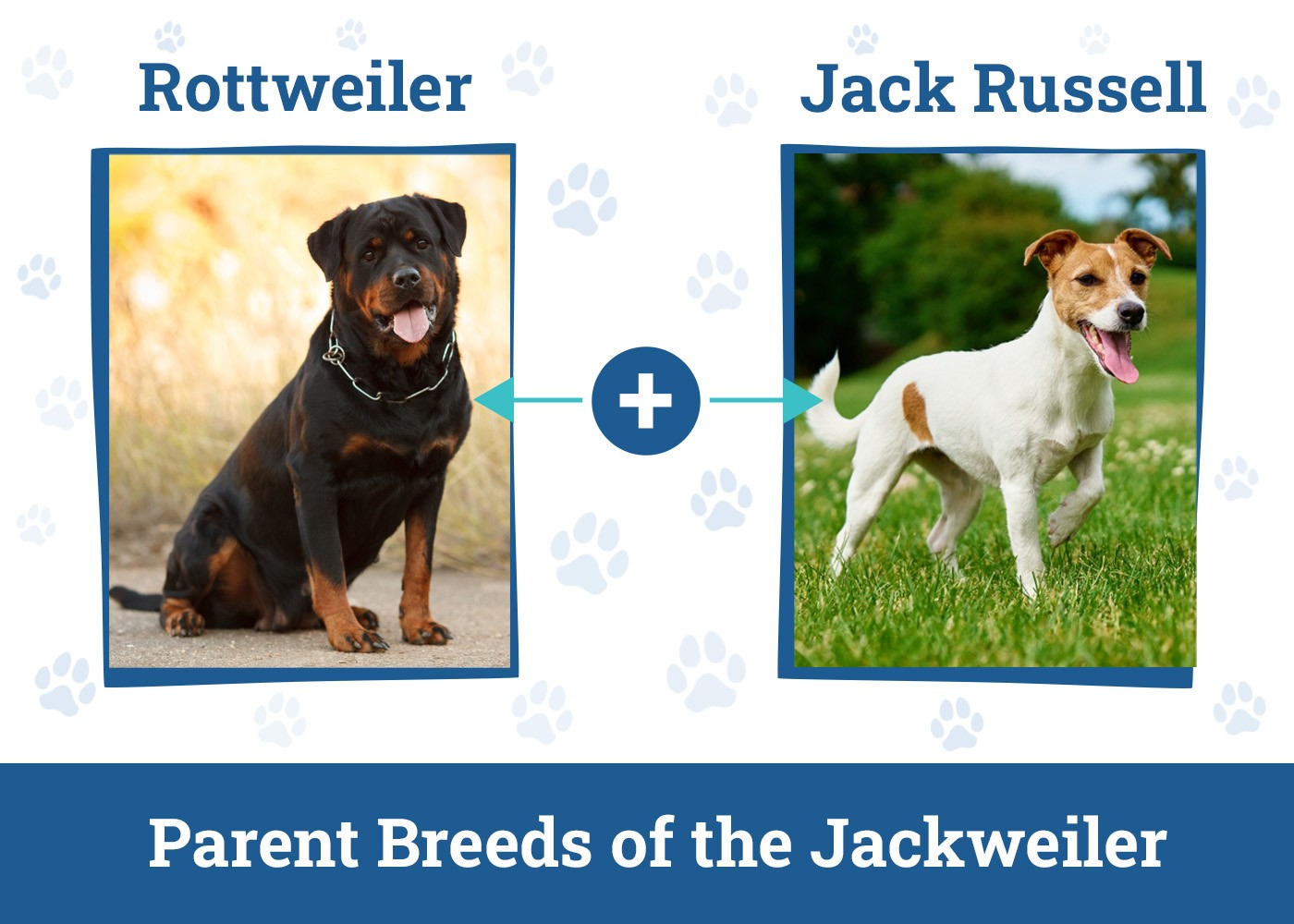
The Jackweiler, a unique designer breed resulting from crossing a Jack Russell Terrier with a Rottweiler, has gained increasing attention since its emergence in the early 2000s. This distinctive mix combines the alertness and high energy of the Jack Russell with the loyalty and protective nature of the Rottweiler. Standing 13-27 inches tall and weighing between 13-100 pounds, these dogs display significant variation in size and appearance. While not recognized by major kennel clubs, Jackweilers are known for their intelligence, trainability, and suitability for active households. However, their strong personality requires early socialization and consistent training.
Physical Appearance and Size Variations
Unique Size Characteristics
The Jackweiler exhibits one of the widest size variations among designer breeds, with height ranging from 13 to 27 inches and weight spanning an extraordinary range of 13 to 100 pounds. This significant variation can occur even within the same litter due to the dramatic size difference between the parent breeds.
Coat and Color Patterns
The coat characteristics tend to be more predictable compared to size variations. Most Jackweilers inherit a medium-dense, short, sleek coat similar to both parent breeds. The predominant colors include:
- Black
- Black and tan
- White with black/tan patches
While coat length is generally consistent, some Jackweilers may develop longer coats than their parents. The coat density and texture make them moderately adaptable to different climates, though they should not be exercised extensively in warm weather.
Health Considerations and Lifespan
Unlike many designer breeds marketed as healthier alternatives through hybrid vigor, Jackweilers can inherit health conditions from both parent breeds. Their average lifespan ranges from 8 to 16 years, with proper care and genetics playing crucial roles. Key health considerations include:
- Orthopedic issues like hip dysplasia and patellar luxation
- Eye conditions such as entropion and cataracts
- Genetic conditions like ichthyosis and Legg-Calve-Perthes Disease
- Cardiovascular concerns including subaortic stenosis
Regular veterinary check-ups and genetic testing can help identify and manage these potential health issues early.
Breed Origin and Basic Characteristics
Development and Recognition
The Jackweiler represents a relatively new designer breed that combines the Jack Russell Terrier with the Rottweiler. While uncommon, this unique mix typically results from unplanned breedings rather than intentional breeding programs. The breed exhibits key characteristics from both parent breeds:
- Height: 13-25 inches
- Weight: 35-65+ pounds
- Lifespan: 10-14 years
- Colors: Black, tan, white
Training Requirements and Daily Care
Exercise and Mental Stimulation
The Jackweiler requires significant daily physical activity and mental enrichment due to their high energy levels inherited from both parent breeds. Key care requirements include:
- 90 minutes of intense exercise daily through activities like:
- Jogging
- Hiking
- Dog sports
- Protection work (size-dependent)
- Early training and socialization are crucial
- Regular boundary setting helps manage stubborn tendencies
While previous sections covered size variations and health issues, this focused training overview emphasizes the breed's substantial exercise needs and intelligence. Their combination of Rottweiler trainability and Jack Russell determination requires consistent, structured training approaches to develop well-adjusted adults. Without adequate physical and mental stimulation, these dogs may develop destructive behaviors due to boredom or excess energy.
Behavioral Characteristics and Family Integration
Protective Instincts and Unique Traits
While previous sections covered general temperament, this section focuses specifically on the Jackweiler's distinctive behavioral patterns. These dogs are notably vocal, inheriting barking tendencies from both parent breeds - the Jack Russell's excitable alerting and the Rottweiler's protective instincts. Their jumping ability, inherited from the Jack Russell side, can reach impressive heights of up to 5 feet despite their variable size.
Socialization Requirements
Though earlier sections discussed training broadly, this segment examines specific socialization needs. The Jackweiler requires careful introduction to:
- Small animals due to inherited prey drive
- Children, with supervision needed due to size/energy levels
- New environments to manage protective tendencies
Early and consistent exposure helps mitigate potential challenges from combining the Jack Russell's high-strung nature with Rottweiler guardianship traits. Special caution is needed around small pets, as their hunting instincts may emerge unexpectedly even with proper socialization. Unlike pure Rottweilers or Jack Russells, this mix requires a more nuanced approach to socialization that addresses both breeds' characteristics simultaneously.
Conclusion
The Jackweiler, a mix between a Jack Russell Terrier and Rottweiler, represents a unique designer breed with highly variable physical traits, particularly in size (ranging from 13-27 inches and 13-100 pounds). This mix inherits a combination of distinct behavioral characteristics from both parent breeds, including high energy levels, protective instincts, and impressive athletic abilities. While they typically have short, dense coats in black, tan, and white colorations, their most notable features are their substantial exercise requirements of 90 minutes daily and their need for careful socialization.
The breed's unique combination of traits presents both opportunities and challenges for potential owners. Their intelligence and trainability make them capable companions, but their high energy levels, potential health issues, and variable size require careful consideration. Success with this mix demands committed owners who can provide consistent training, extensive exercise, and early socialization, particularly around small animals and children. Future owners should also be prepared for regular veterinary care to monitor and address potential inherited health conditions that can affect their 8-16 year lifespan.